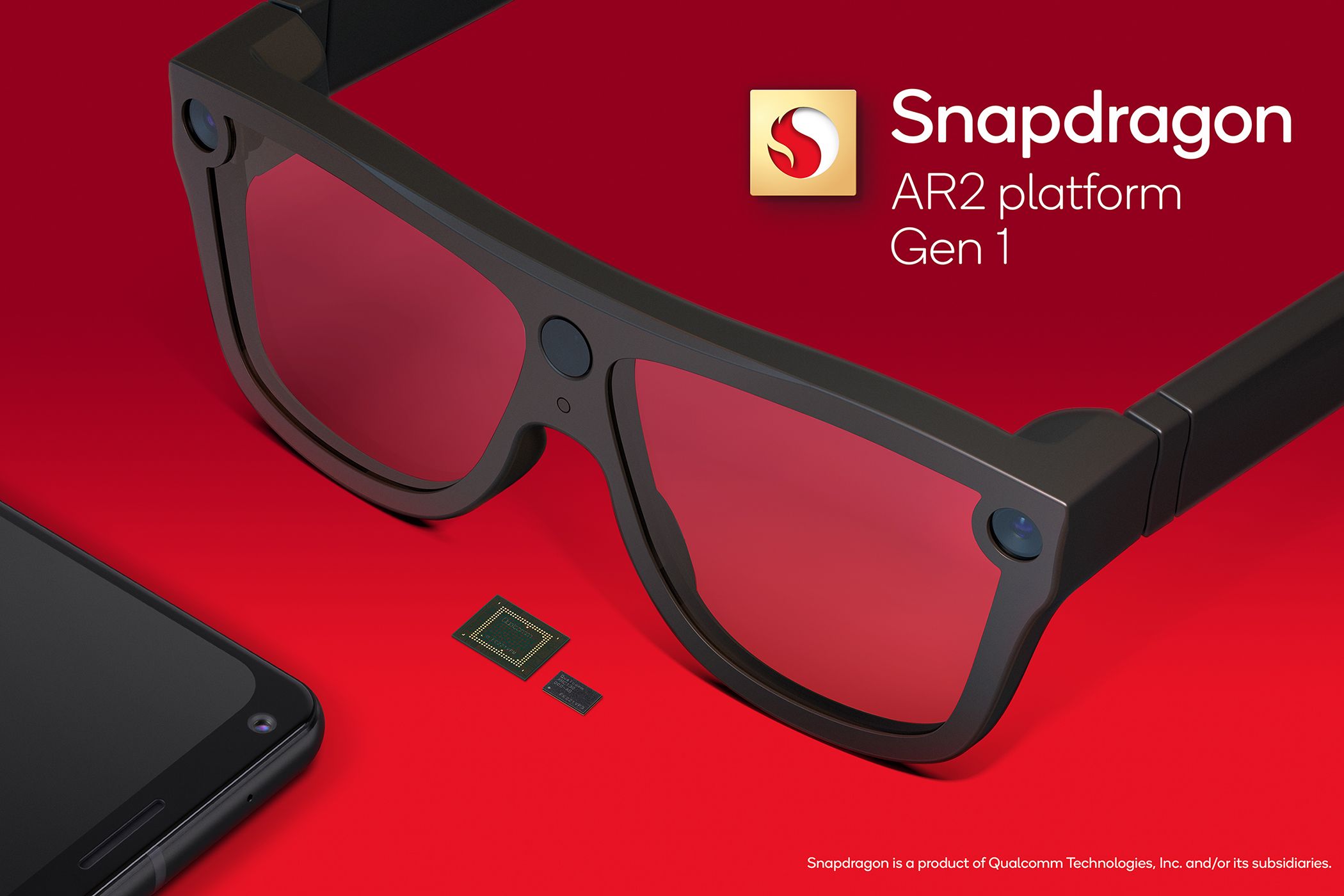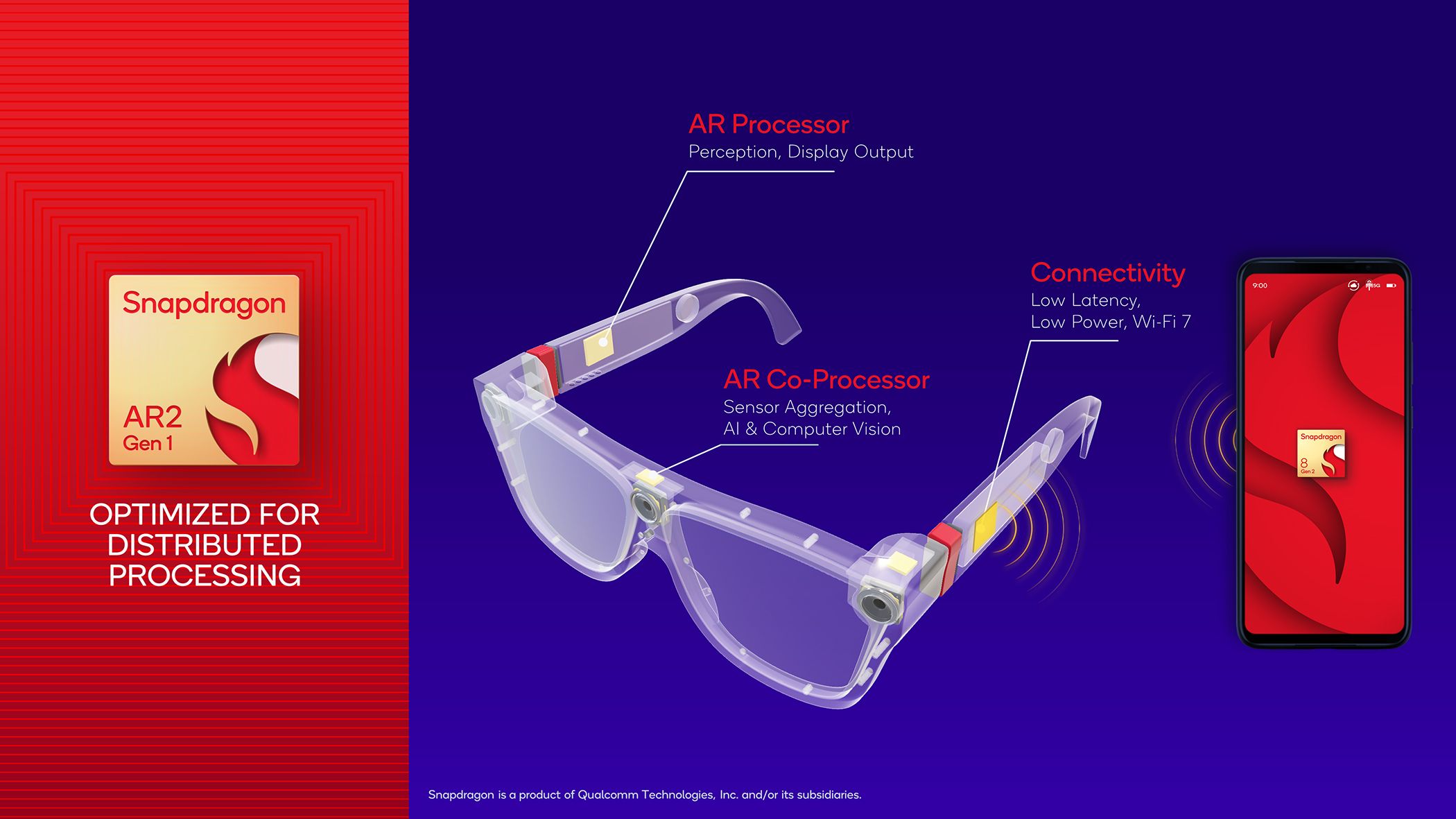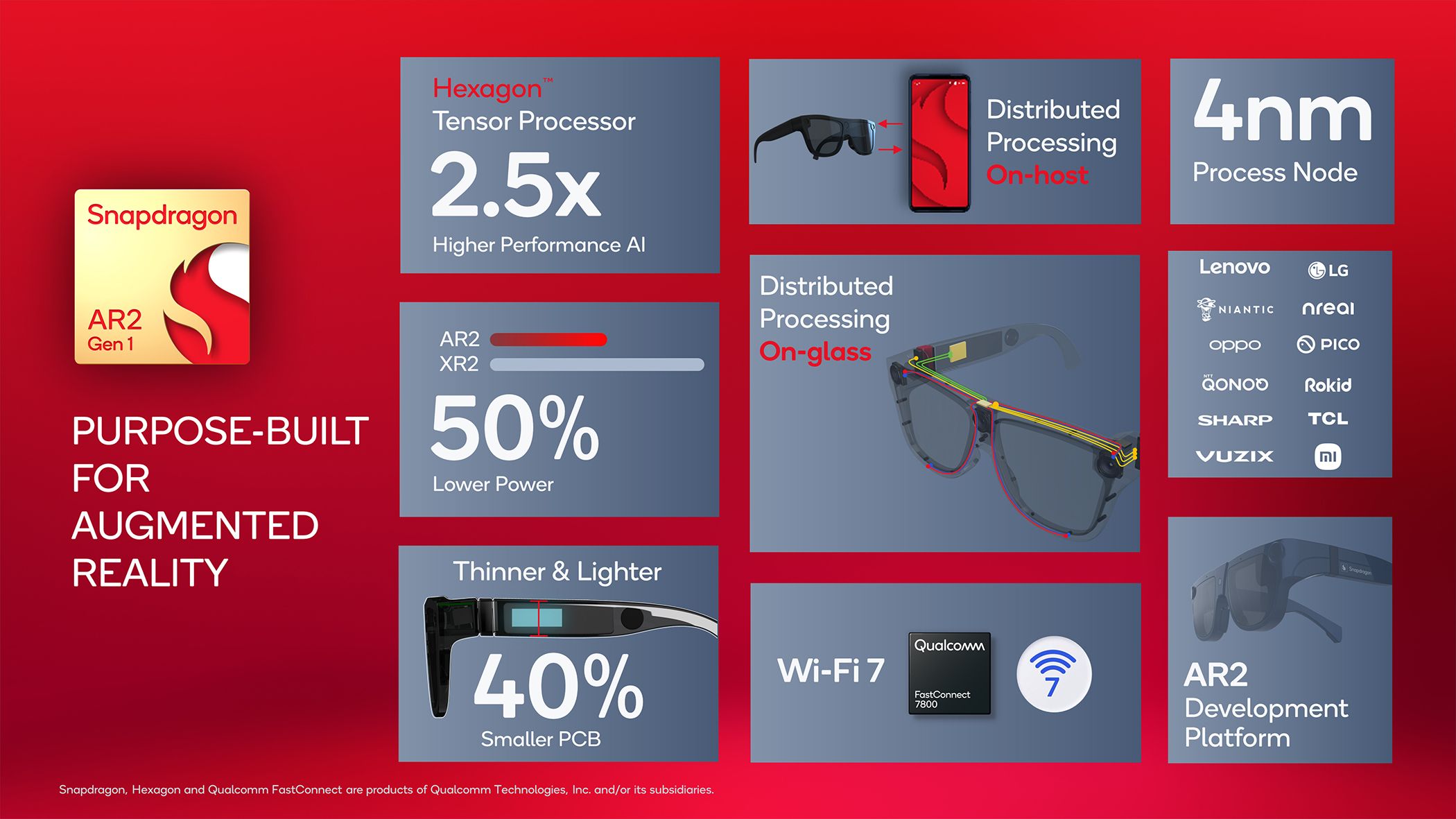Alongside its latest flagship SoC for smartphones, Qualcomm debuted a new augmented reality platform for next-gen AR smart glasses during its ongoing Snapdragon Summit today. The new Snapdragon AR2 Gen 1 is part of Qualcomm's extended reality (XR) portfolio and brings several improvements over the Snapdragon XR2 Gen 1 from 2019. However, unlike the Snapdragon XR2 Gen 1 and the recently released XR2 Plus Gen 1, the new platform is only designed to power AR experiences.
The new Snapdragon AR2 Gen 1 is built from the ground up on a multi-chip distributed processing architecture combined with customized IP blocks. Qualcomm claims that the new platform delivers 2.5x better AI performance than the Snapdragon XR2 Gen 1 while consuming 50% less power, making it ideal for AR glasses that consume less than 1W power.
The Snapdragon AR2 Gen 1's multi-chip architecture consists of an AR processor, an AR co-processor, and a connectivity platform. Qualcomm says the AR processor is "optimized for low motion-to-photon latency while supporting up to nine concurrent cameras for user and environmental understanding. Its enhanced perception capabilities include a dedicated hardware accelerated engine that improves user motion tracking and localization, an AIR accelerator to reduce latency for sensitive input interactions such as hand tracking or 6DoF, and a projection engine for a smoother experience."
The AR co-processor aggregates data from connected cameras and sensors, enabling features like eye tracking and iris authentication for foveated rendering. It optimizes workloads to focus only where the user is looking, reducing power consumption. Finally, the connectivity platform utilizes a FastConnect 7800 system to unlock Wi-Fi 7 connectivity with less than 2ms latency between the AR glasses and the smartphone or host device.
Qualcomm further adds that the Snapdragon AR2 Gen 1 is capable of offloading complex tasks to Snapdragon-powered smartphones, PCs, or other compatible host devices to further reduce latency and offer a smoother visual experience. The platform is also Snapdragon Spaces ready, which means that developers can use the Snapdragon Spaces XR Developer Platform to create immersive AR content for AR glasses featuring the new chip.
Qualcomm is working with several OEMs, including Lenovo, LG, Nreal, Oppo, Pico, QONOQ, Rokid, Sharp, TCL, Tencent, Vuzix, and Xiaomi, to bring a new generation of AR smart glasses featuring the Snapdragon AR2 to the market. Currently, these OEMs have not shared any details about their upcoming smart glasses. But we expect to learn more in the coming months.



